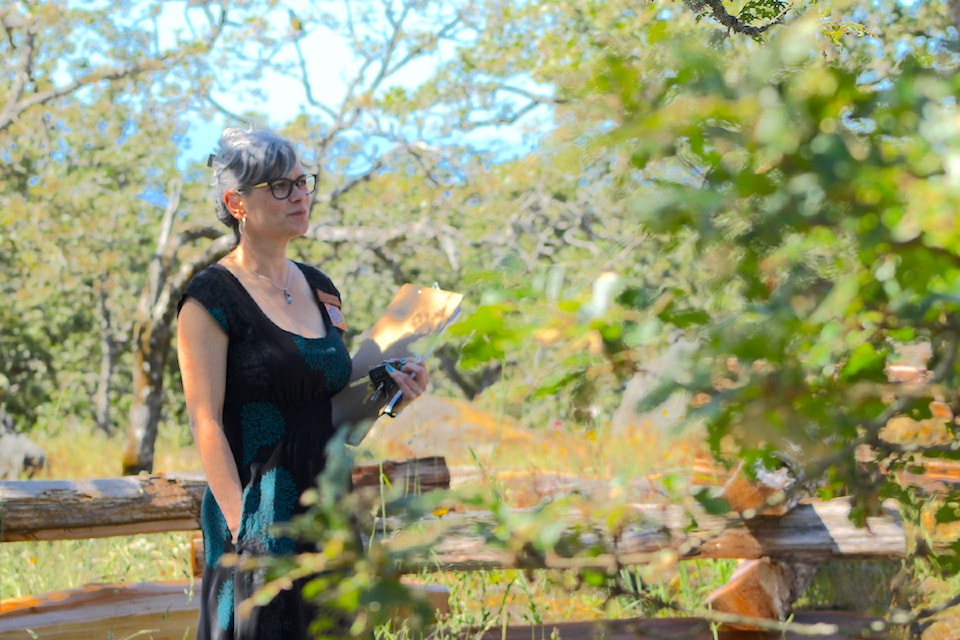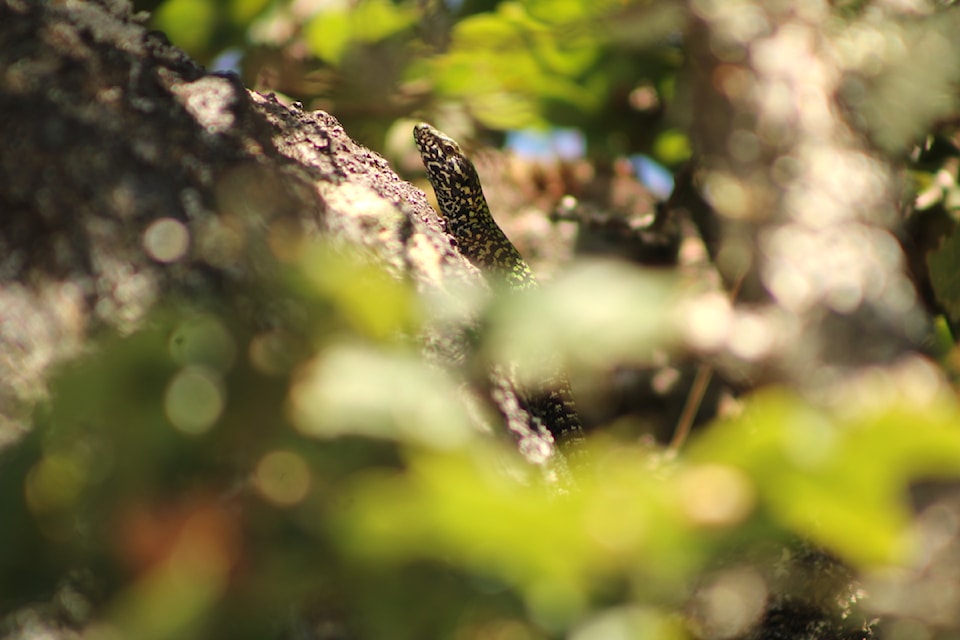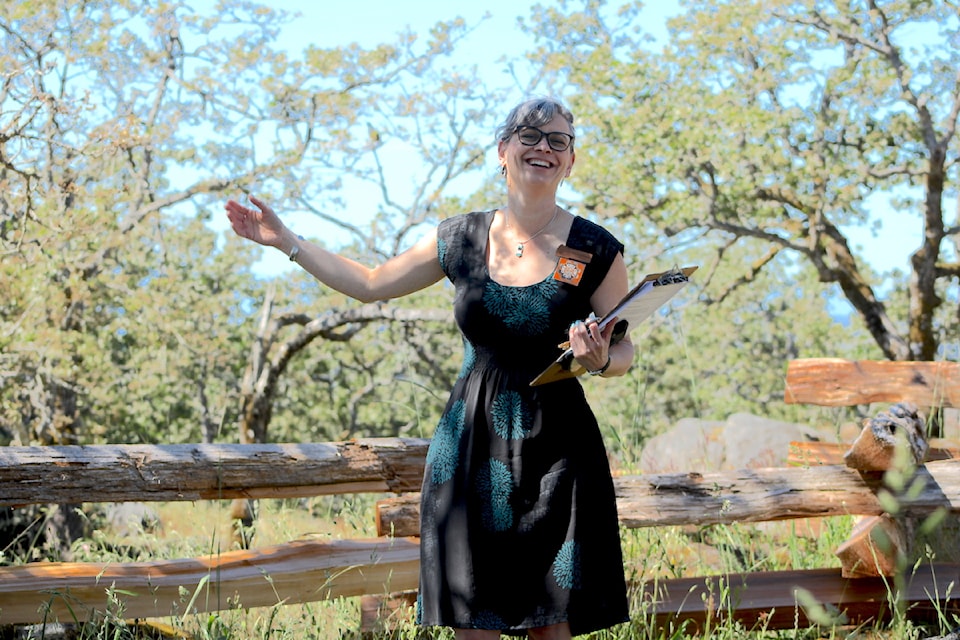As adventurous school kids roamed across rocky outcrops and through grassy meadows, Cara Gibson kindly calls on them to return to Christmas Hill's marked trails as she shares the importance of the rare plants growing all around.
"Christmas Hill is actually really special so we have to try and stay on the trails ... I know it doesn't look like much but some of these lichens occur nowhere else in Canada," the Swan Lake Christmas Hill Nature Sanctuary's executive director tells the students as they climb off a rocky mound, some thanking her for the brief ecological education.
The teachable moment reflects the sanctuary's daily mission, as the self-described "living classroom" aims to foster more understanding about the importance of its natural systems – from its Garry oak woodlands to the vernal ponds that were shaped by glacial activity.
That mission recently got a boost as the Christmas Hill side has been recognized as a Key Biodiversity Area (KBA), an official distinction handed out to pockets of nature that contribute to the persistence of biodiversity nationally and globally.
The designated zones – which aim to promote conservation as they support rare or threatened species and ecosystems – must meet certain criteria to be deemed a KBA.
“It’s a real delight, so many hands and hearts have been a part of this place, and so to see the recognition of all of that labour is really beautiful,” said Gibson, noting the thousands of volunteer hours that go into maintaining the site every year.
Christmas Hill's productive ecosystem supports around 250 plant species and an array of animals, while the wider sanctuary hosts roughly 10 per cent of Saanich's rare, threatened and endangered species.
The site's ecological resilience is rooted in its Indigenous stewardship. Practices like prescribed burning helped shape the Garry oak system, along with the Camas plants that still grow along Christmas Hill's natural walkways.
Today, the natural area is tucked into what will be an increasingly developed area, and that urban interface is evident as the sounds of birds chirping in the afternoon mix with the buzz coming from nearby vehicles and power tools.

Despite the urban pressures, Gibson says the sanctuary represents a backyard for many in the community as the bastion of biodiversity includes some of the country's most exceptional habitat. That helps the hill house species of mosses and insects in an abundance not seen anywhere else in Canada, the entomologist says.
But the flourishing plant life can also attract uninvited guests, like invasive wall lizards that rustle the trail-side flora. Other species like Scotch broom are kept at bay by the sanctuary's network of volunteers. Gibson said that invasive plant could radically alter the landscape as it out competes native plants for soil, nutrients or light.
"It really is that integration of community and community work to steward this place to keep the integrity of it," the executive director said of the efforts that were vital to obtaining KBA status.

Other aspects of Christmas Hill may look concerning, but actually reflect a well-functioning system. Gibson points to Garry oak leaves that have been extensively snacked on by caterpillars. Those insects are a key food source for the many birds that flock to the sanctuary – helping to spur a diverse mix of plants cascading from overhead tree branches all the way down to the soil.
"In many instances, this defoliation is a key part of the cycle where it's letting light down to the understory and all the plants down here are expecting that to happen, so that's what helps them grow," Gibson said.
She highlights how Christmas Hill is one of the region's last spots supporting a Garry oak system.
"I think they have just incredible character and they're this beautiful indicator of place," the scientist said.

Gibson has watched on as Christmas Hill and the sanctuary has brought people of all ages together to get excited about nature.
That's come in the form of birders taking in the more than 200 species that visit the site annually, local organizations engaging those living with disabilities at the site and helping youth filled with eco-anxiety alleviate their concerns by giving them hands-on conservation opportunities.
As the sanctuary aims to inspire the preservation of nature, Gibson said involving the community in that pursuit is one of her favourite parts of the job.
“I think we all have a part to play in that.”
